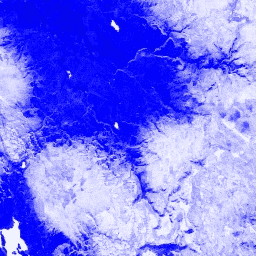Page Summary
-
These Landsat 4 TM Collection 1 Tier 1 composites are created from Tier 1 orthorectified scenes using top-of-atmosphere reflectance.
-
The Normalized Difference Snow Index (NDSI), calculated using Green and Mid-IR bands, is used to identify snow.
-
Composites are generated from all scenes within each 8-day period, with the most recent pixel value used for the composite.
-
Landsat datasets are public domain and can be used without copyright restrictions, with acknowledgement of the USGS as the data source encouraged.

- Dataset Availability
- 1982-08-21T00:00:00Z–1993-12-11T00:00:00Z
- Dataset Provider
- Tags
Description
These Landsat 4 TM Collection 1 Tier 1 composites are made from Tier 1 orthorectified scenes, using the computed top-of-atmosphere (TOA) reflectance. See Chander et al. (2009) for details on the TOA computation.
The Normalized Difference Snow Index is used to identify snow, based on its characteristically higher reflectance in the visible portion of the spectrum compared to the mid-IR. NDSI is computed using the Green and Mid-IR bands, and has a range of -1.0 to 1.0. See Riggs et al. (1994) for details.
These composites are created from all the scenes in each 8-day period beginning from the first day of the year and continuing to the 360th day of the year. The last composite of the year, beginning on day 361, will overlap the first composite of the following year by 3 days. All the images from each 8-day period are included in the composite, with the most recent pixel as the composite value.
Bands
Bands
| Name | Pixel Size | Description |
|---|---|---|
NDSI |
30 meters | Normalized Difference Snow Index |
Terms of Use
Terms of Use
Landsat datasets are federally created data and therefore reside in the public domain and may be used, transferred, or reproduced without copyright restriction.
Acknowledgement or credit of the USGS as data source should be provided by including a line of text citation such as the example shown below.
(Product, Image, Photograph, or Dataset Name) courtesy of the U.S. Geological Survey
Example: Landsat-7 image courtesy of the U.S. Geological Survey
See the USGS Visual Identity System Guidance for further details on proper citation and acknowledgement of USGS products.